Previous Episodes
- December 2025
- November 2025
- October 2025
- September 2025
- August 2025
- July 2025
- June 2025
- May 2025
- April 2025
- March 2025
- February 2025
- January 2025
- December 2024
- November 2024
- October 2024
- September 2024
- August 2024
- July 2024
- June 2024
- May 2024
- April 2024
- March 2024
- February 2024
- January 2024
- December 2023
- November 2023
- October 2023
- September 2023
- August 2023
- July 2023
- June 2023
- May 2023
- April 2023
- March 2023
- February 2023
- January 2023
- December 2022
- November 2022
- October 2022
- September 2022
- August 2022
- July 2022
- June 2022
- May 2022
- April 2022
- March 2022
- February 2022
- January 2022
- December 2021
- November 2021
- October 2021
- September 2021
- August 2021
- July 2021
- June 2021
- May 2021
- April 2021
- March 2021
- February 2021
- January 2021
- December 2020
- November 2020
- October 2020
- September 2020
- August 2020
- July 2020
- June 2020
- May 2020
- April 2020
- March 2020
- February 2020
- January 2020
- December 2019
- November 2019
- October 2019
- September 2019
This blog post took a bit longer than the episode, so apologies for getting it up late.
Here are photos from Asuka from my various trips there, if you want to look at all of them. Otherwise, check out the gallery, below, for specific highlights:
https://www.flickr.com/photos/tatsushu/albums/72157624920460502/
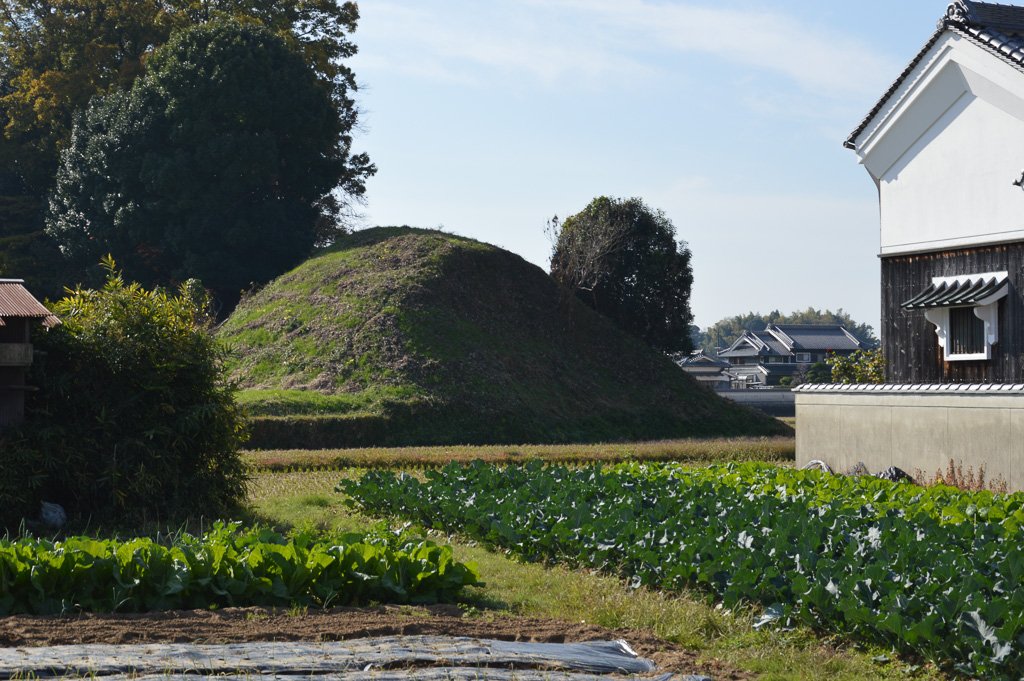
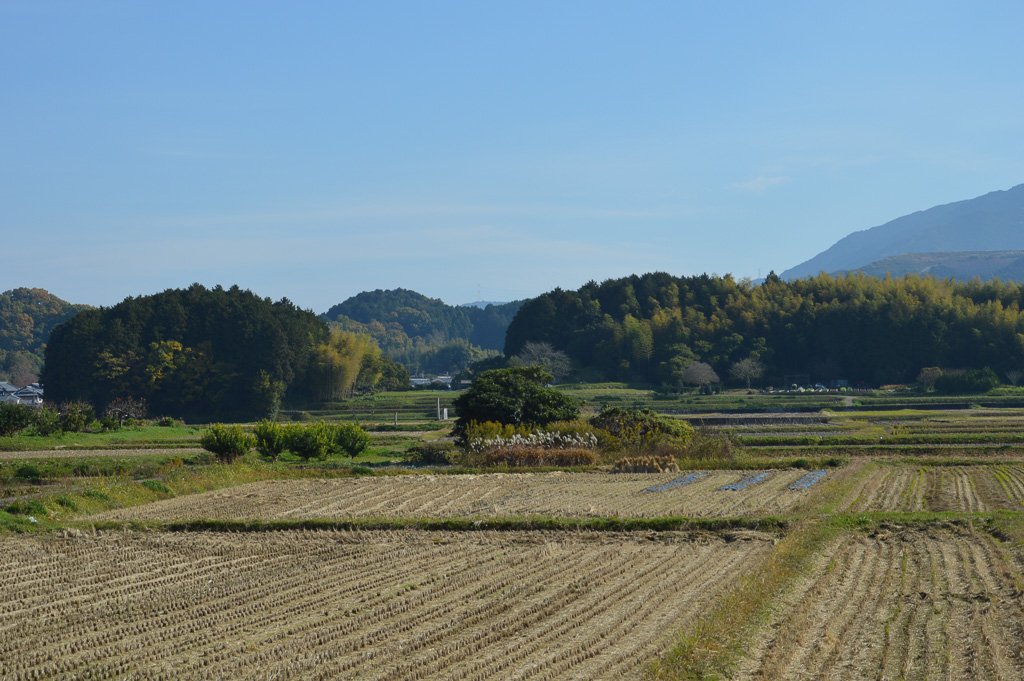
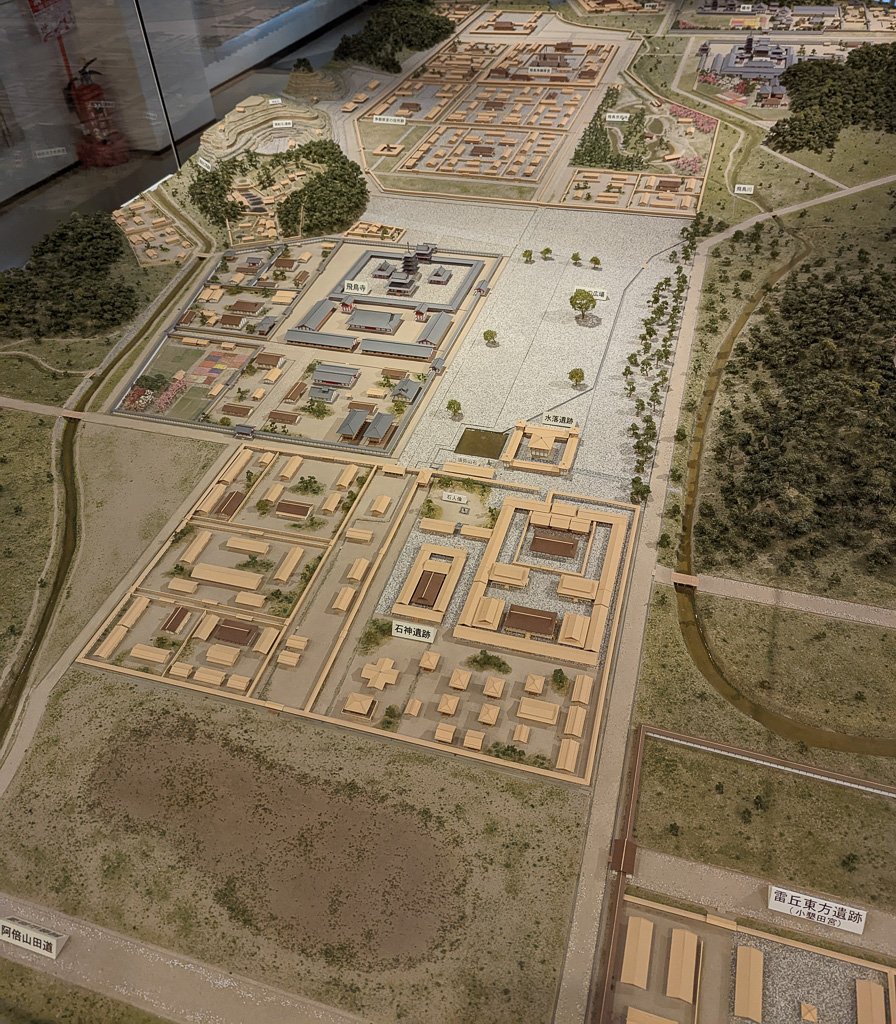
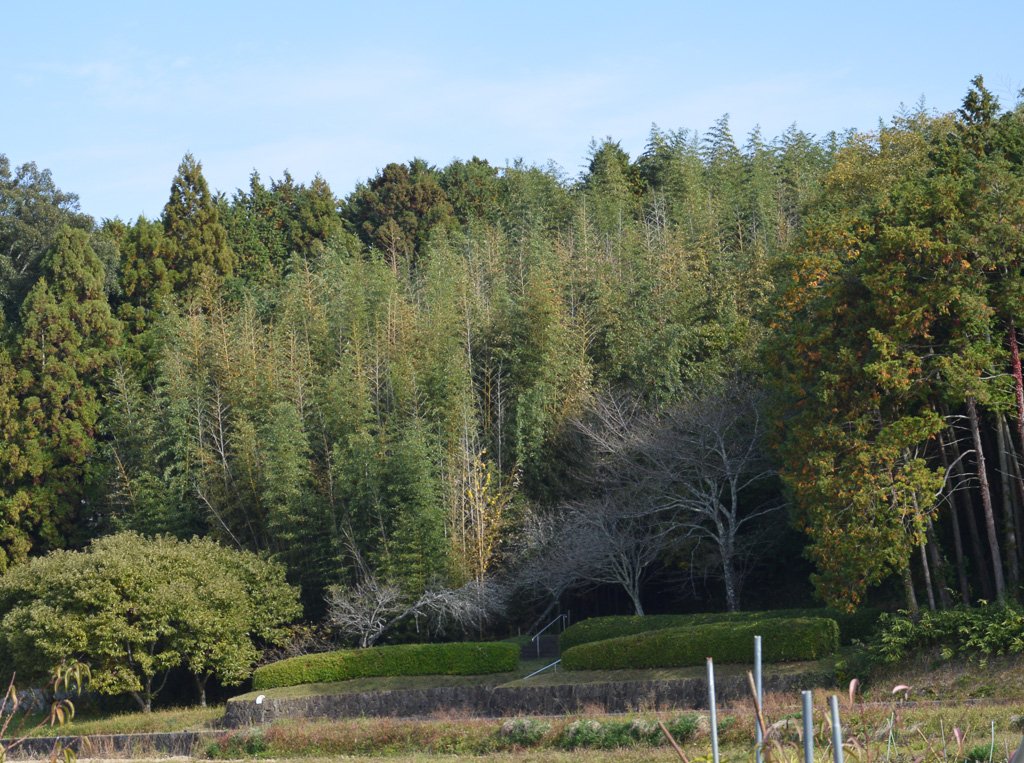

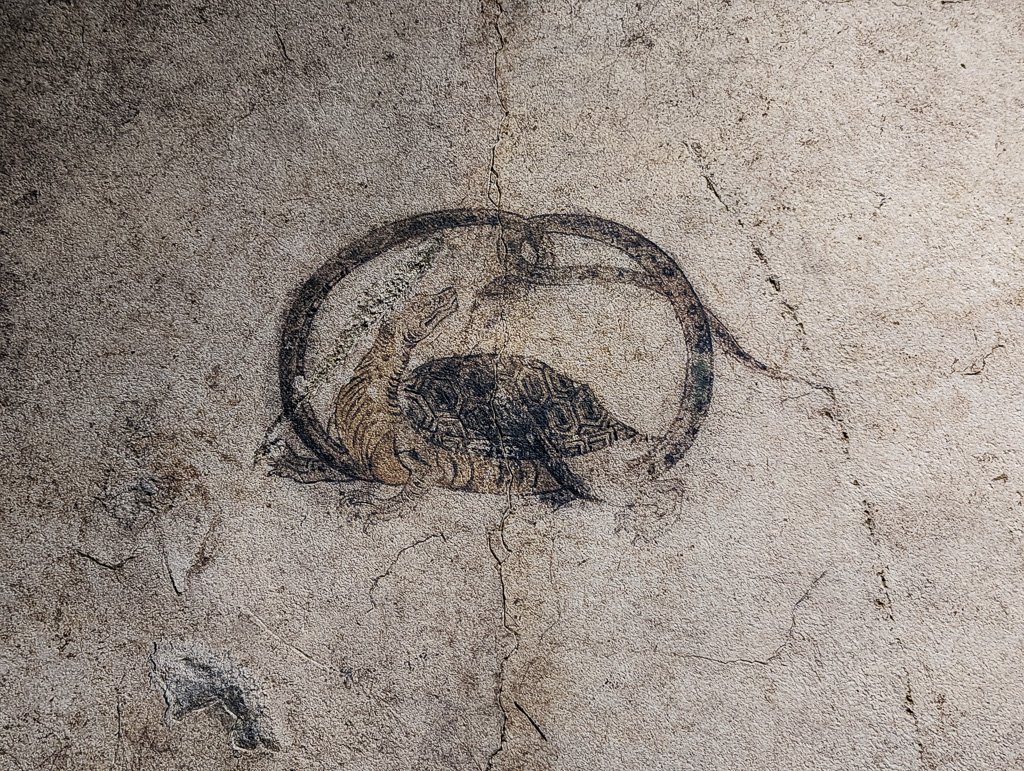
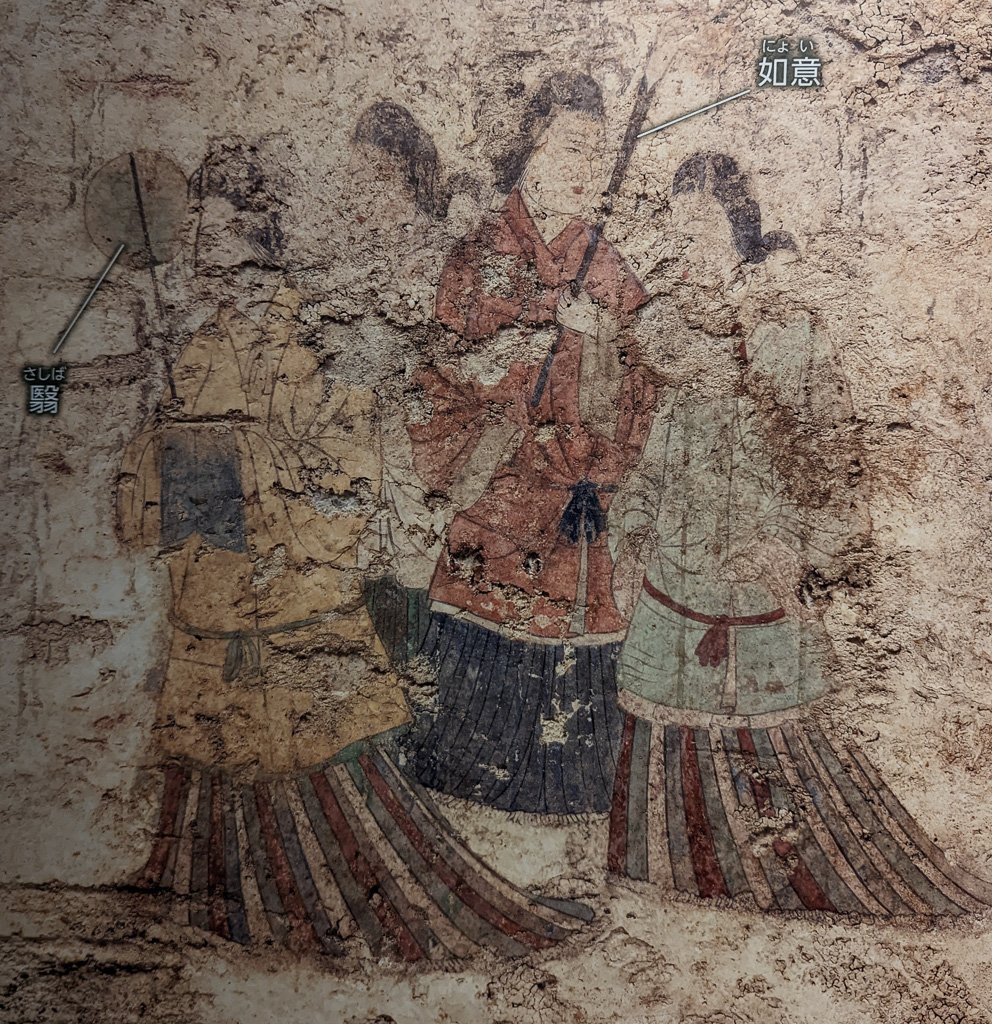
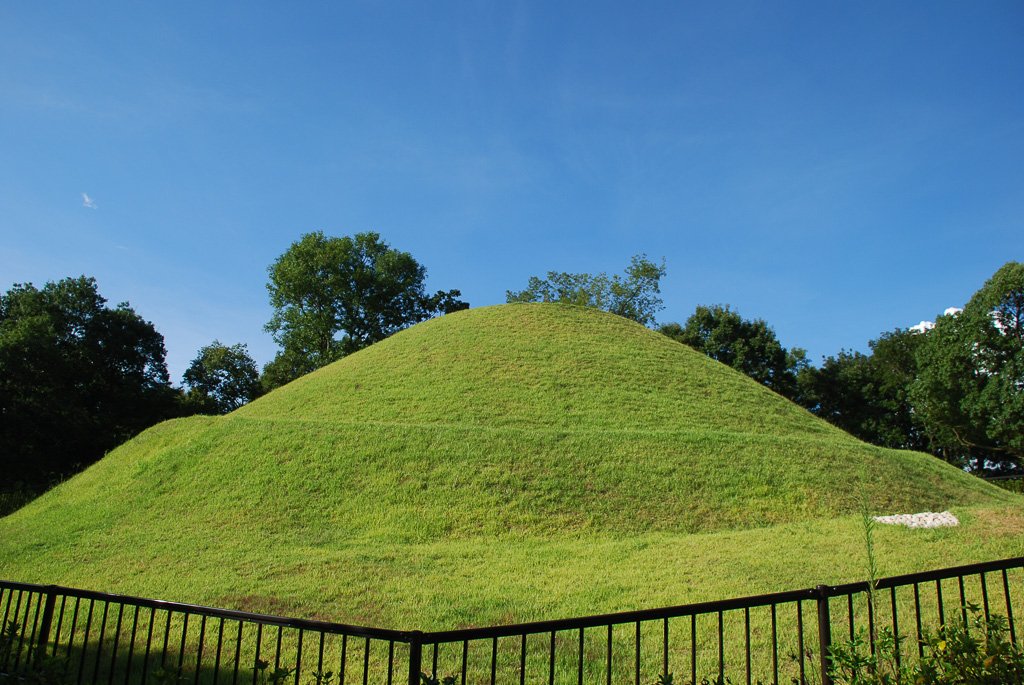
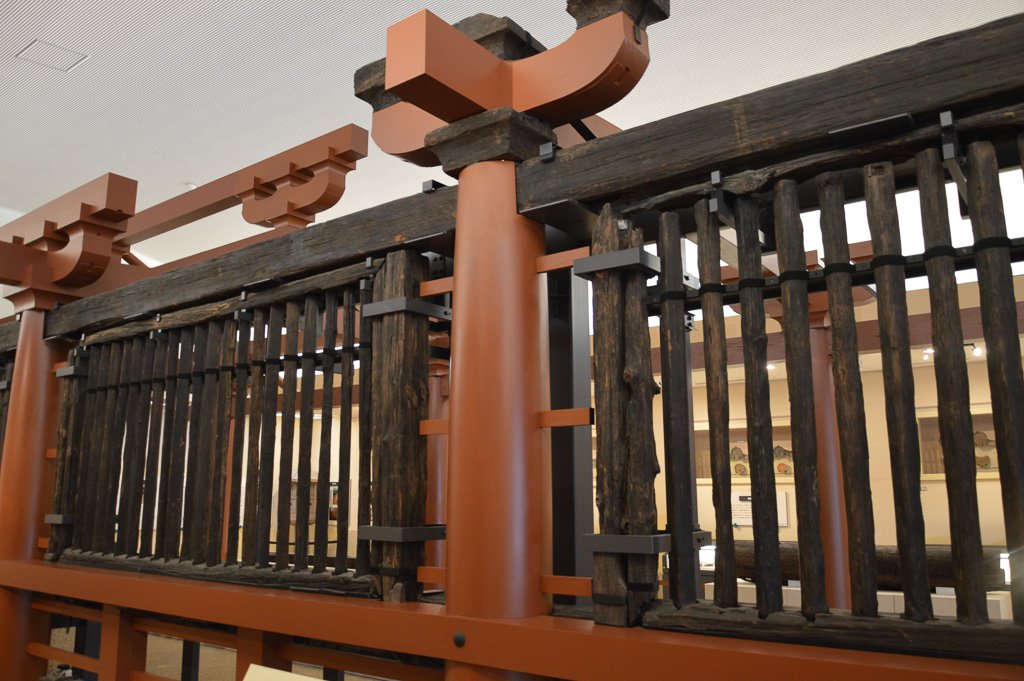
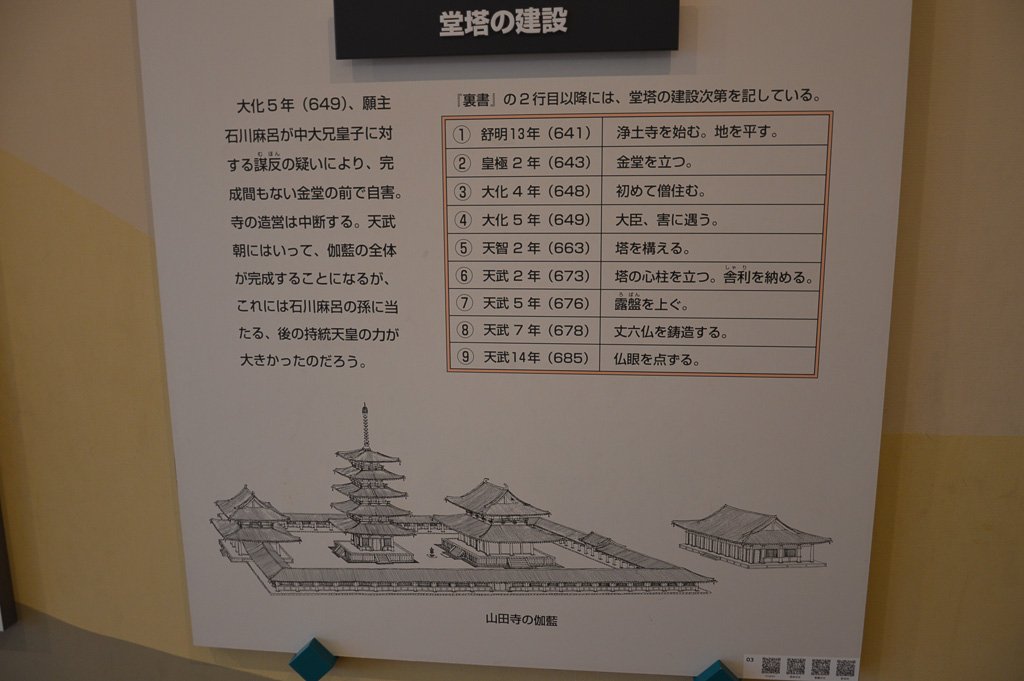
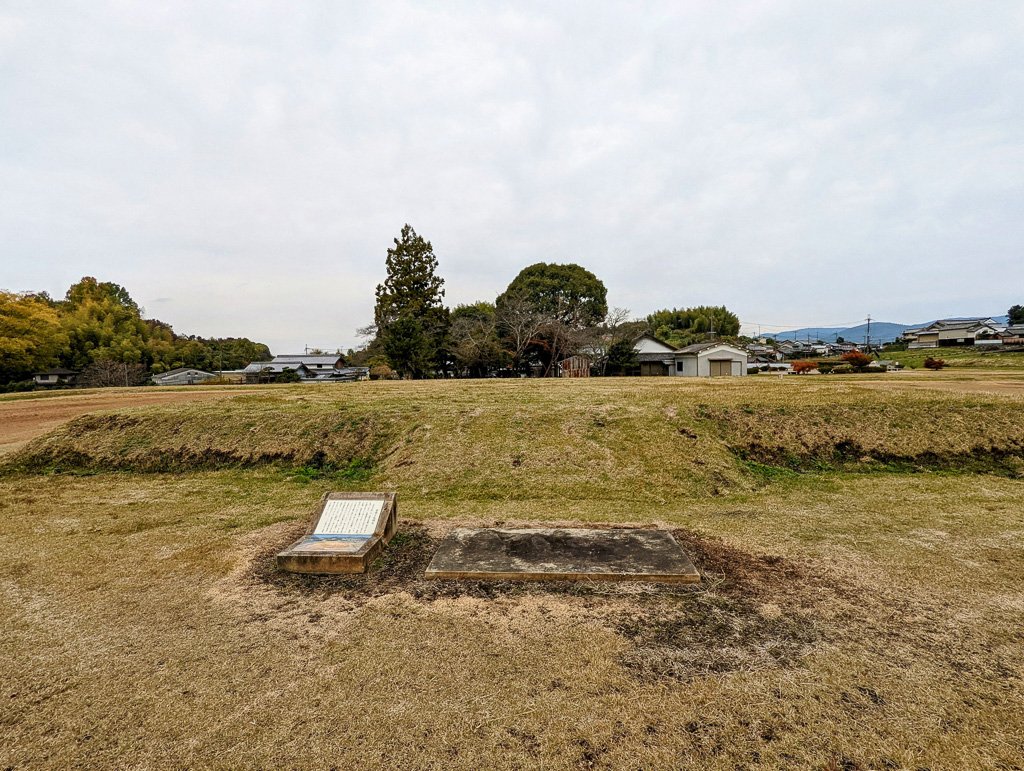
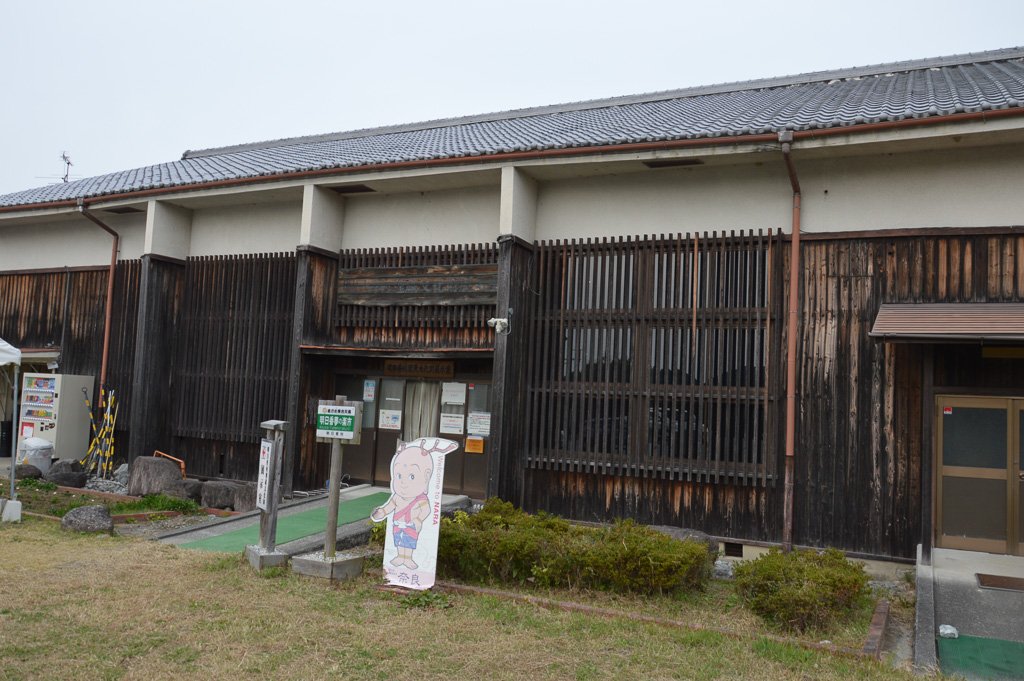
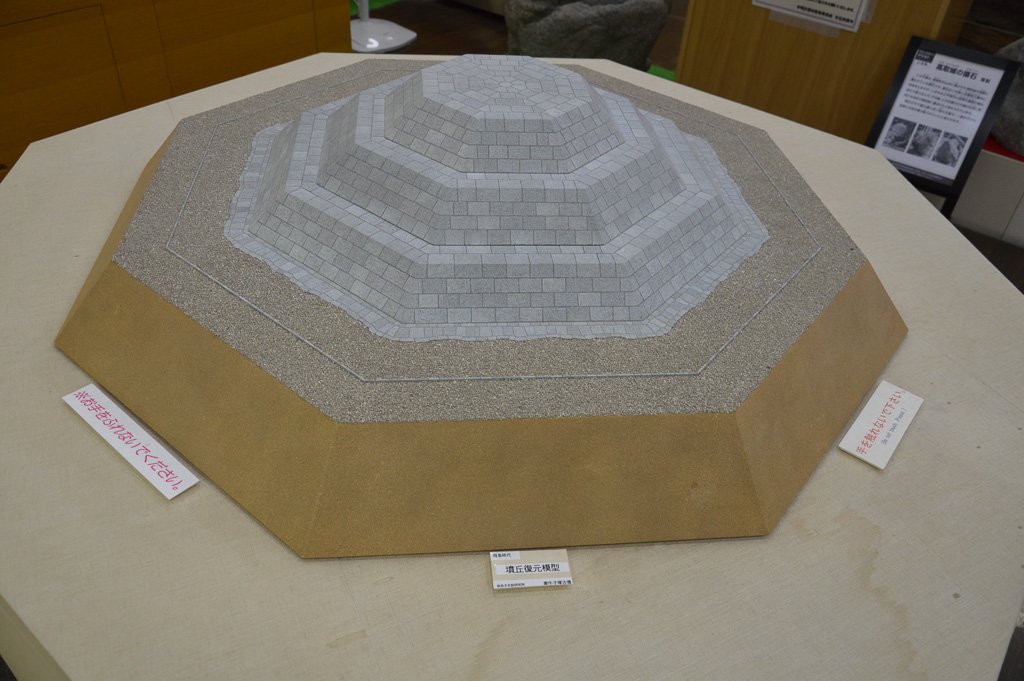


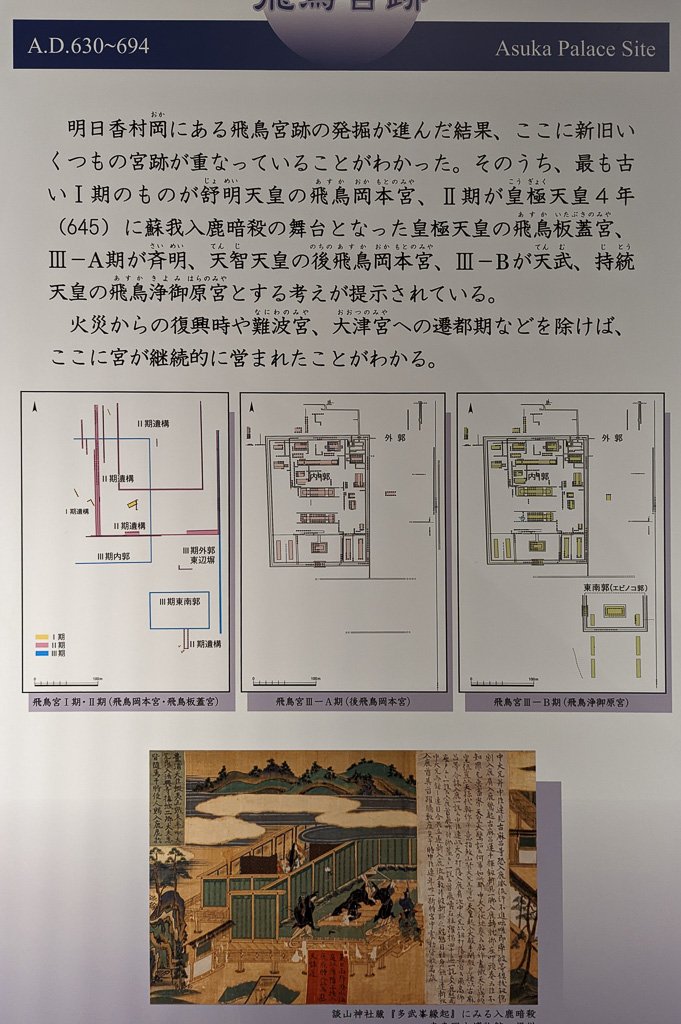
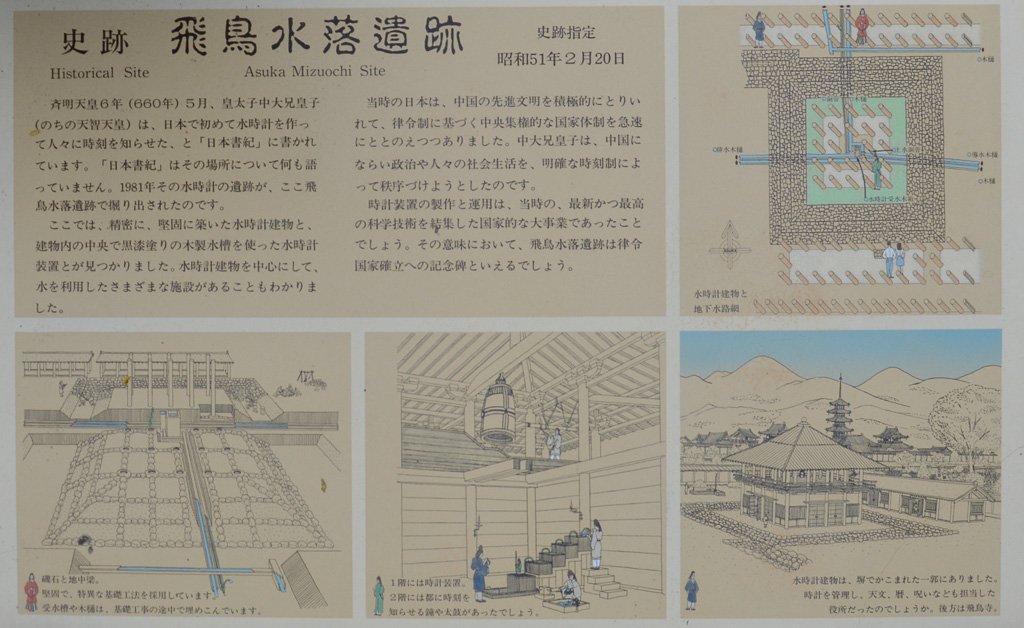
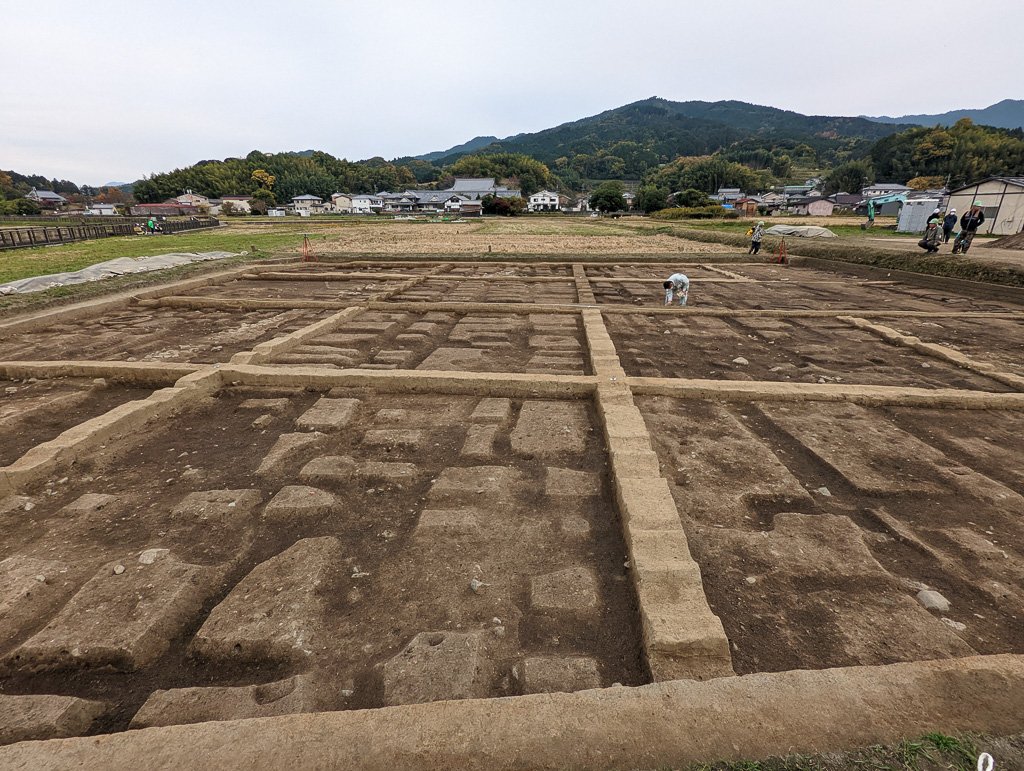
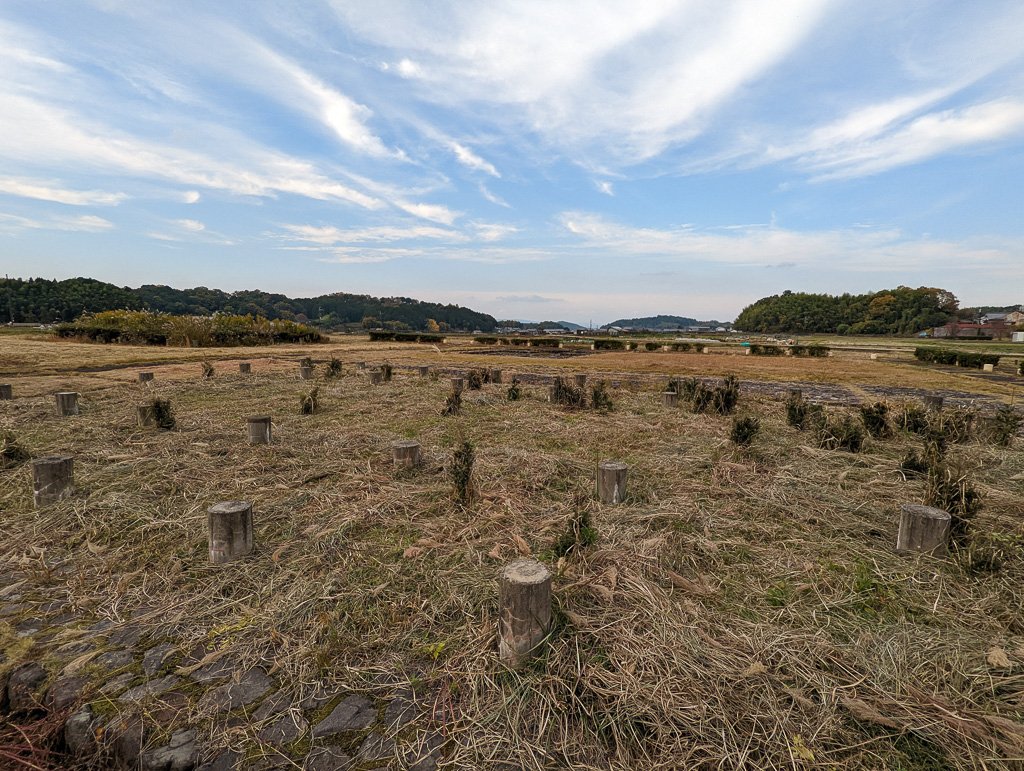
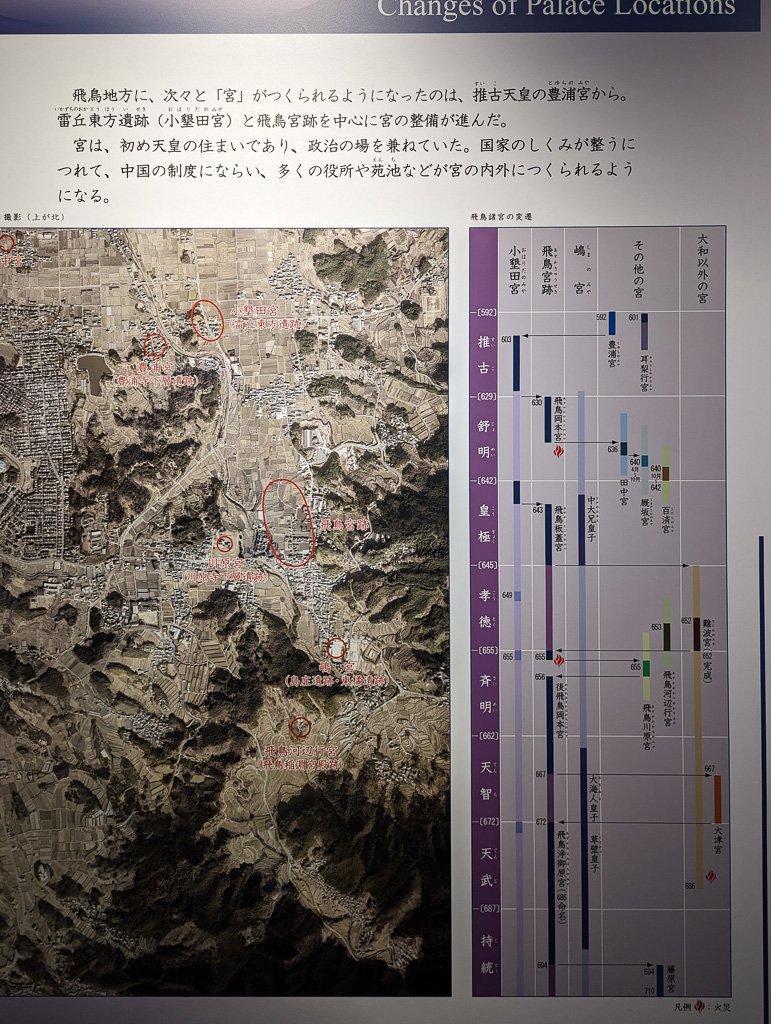
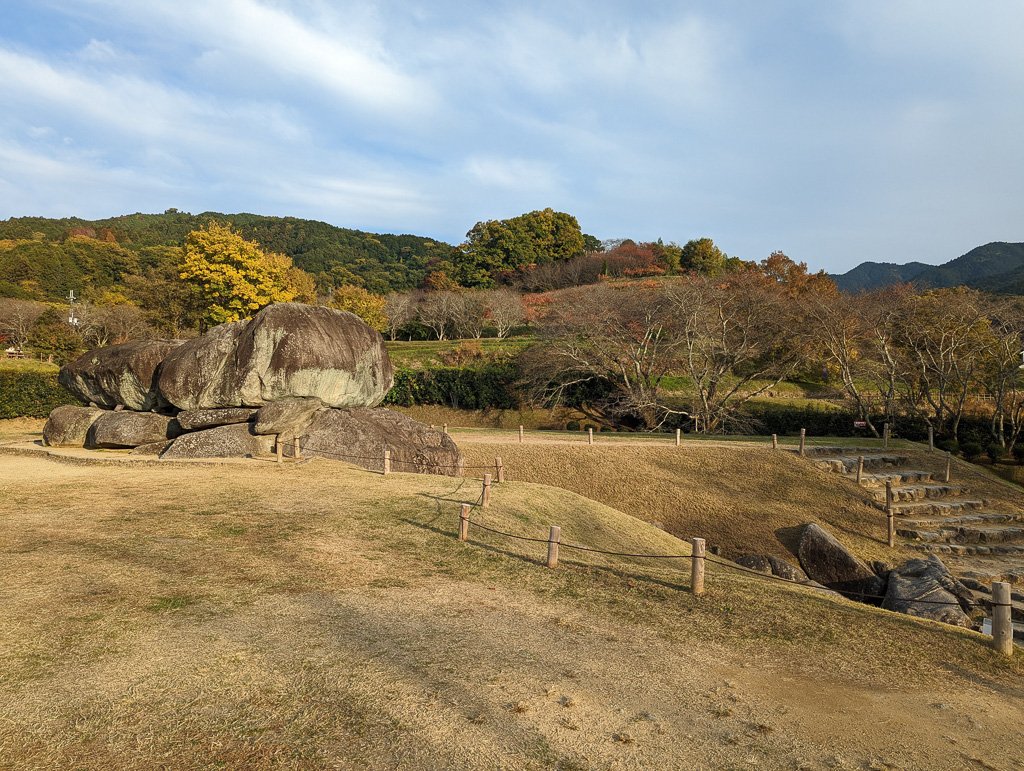
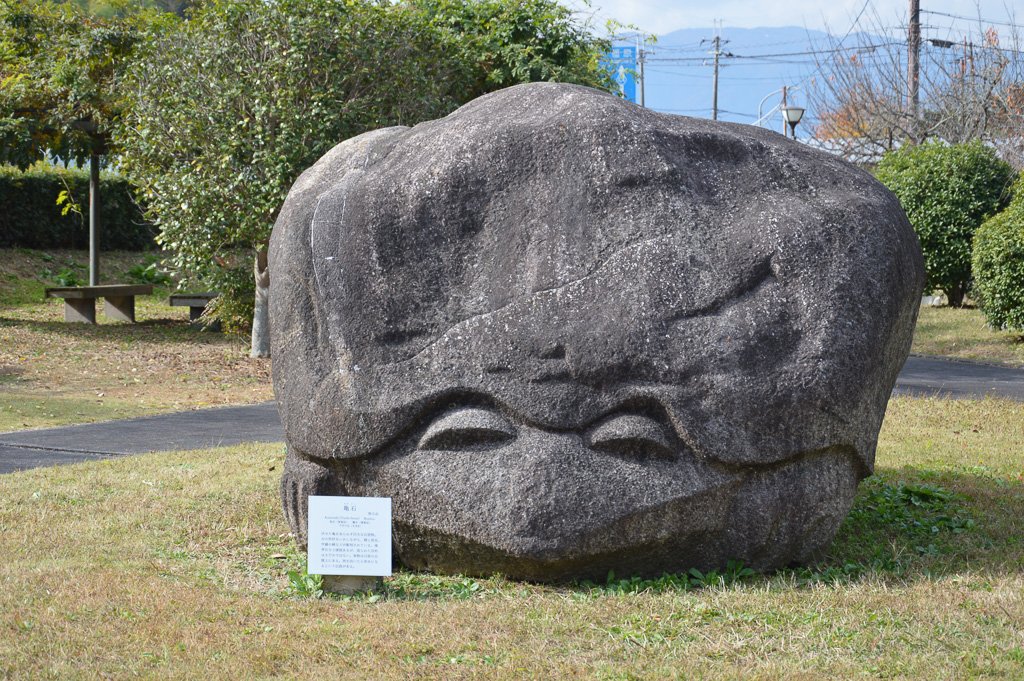
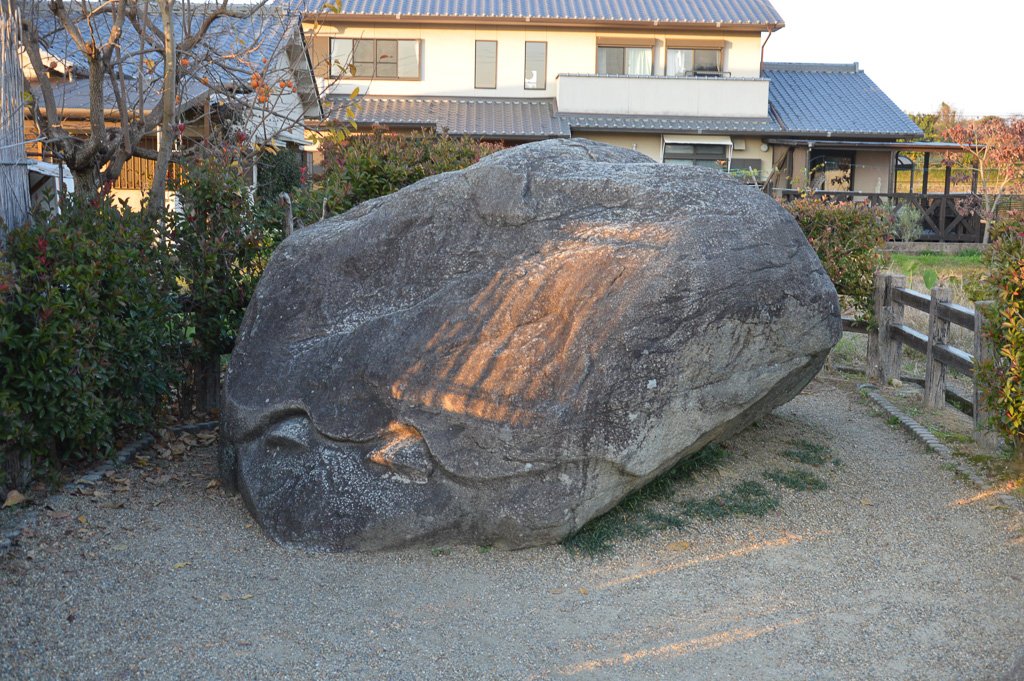
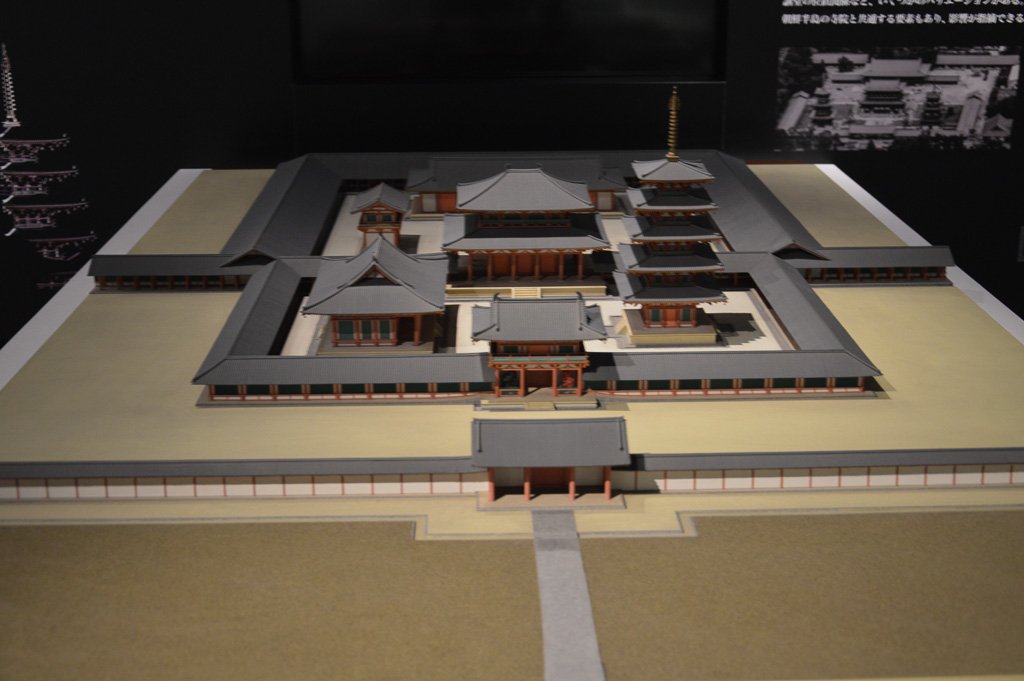
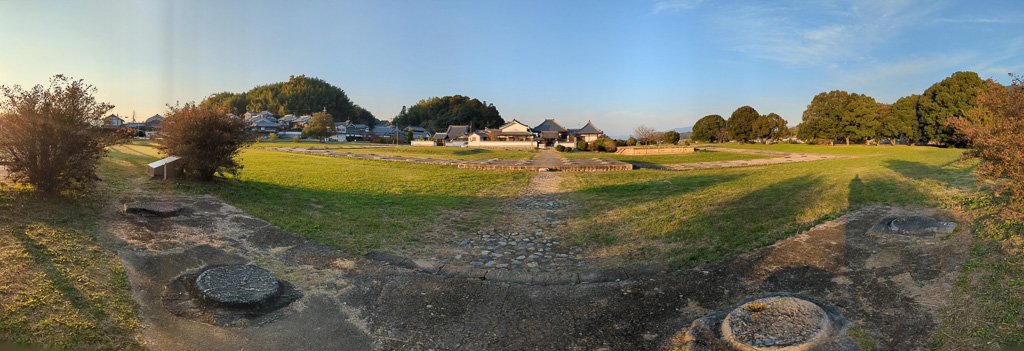
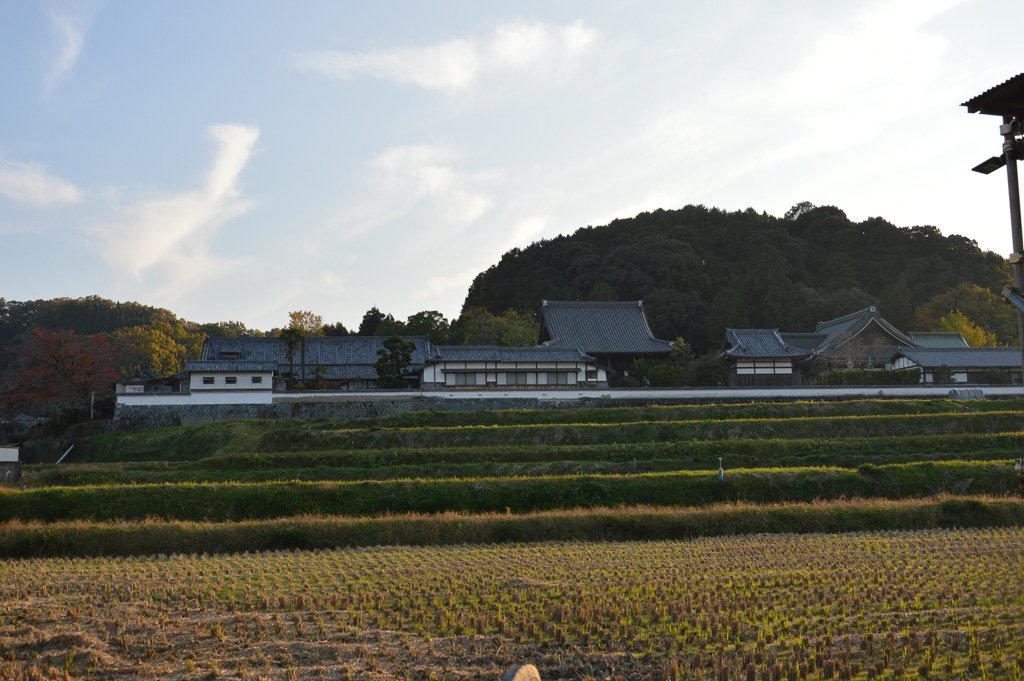
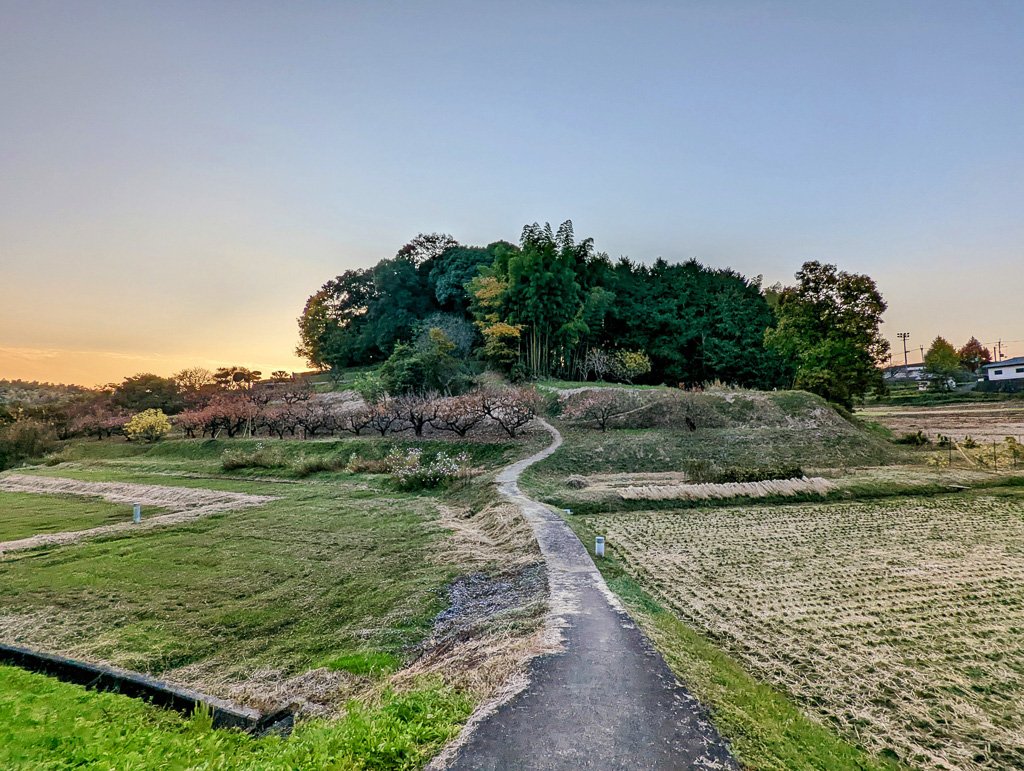
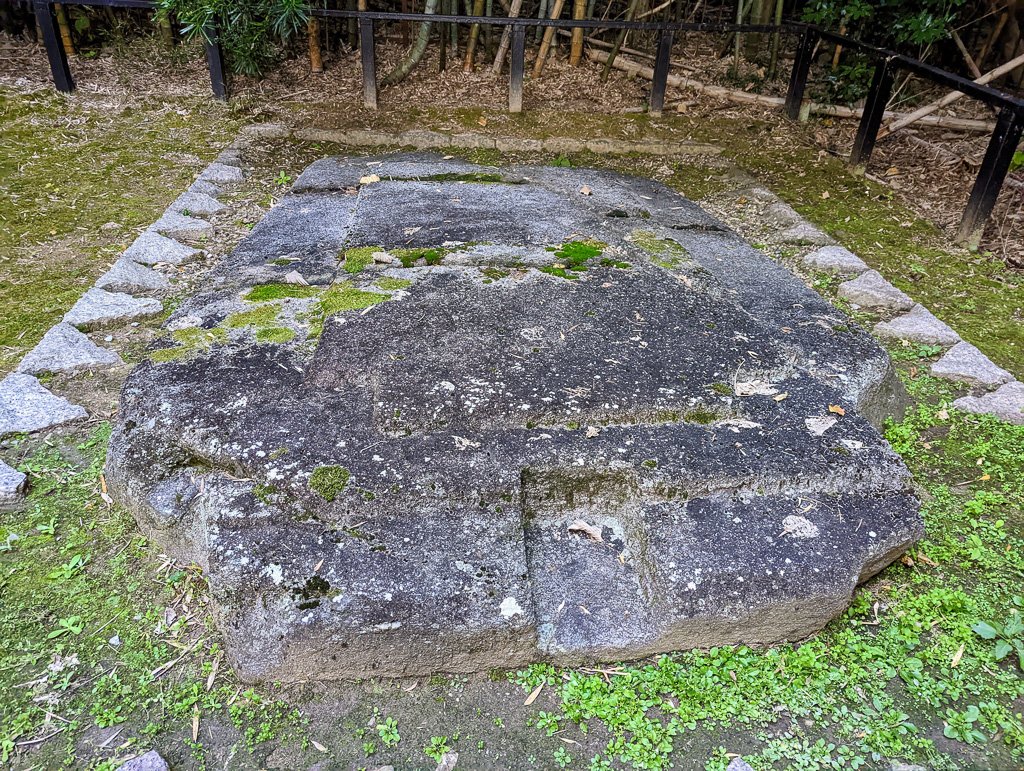
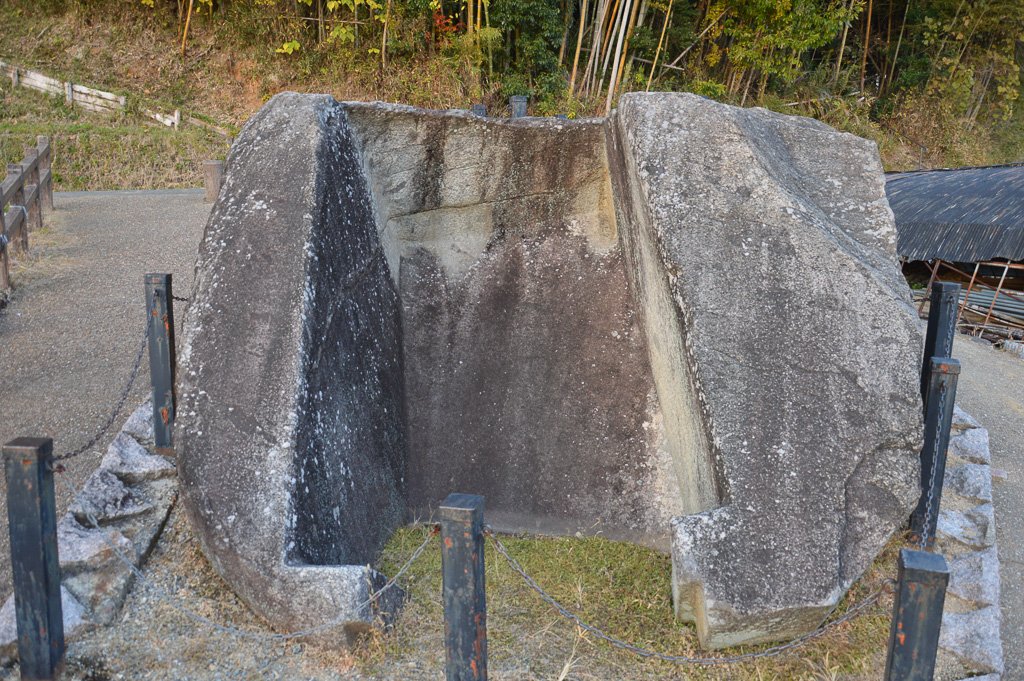

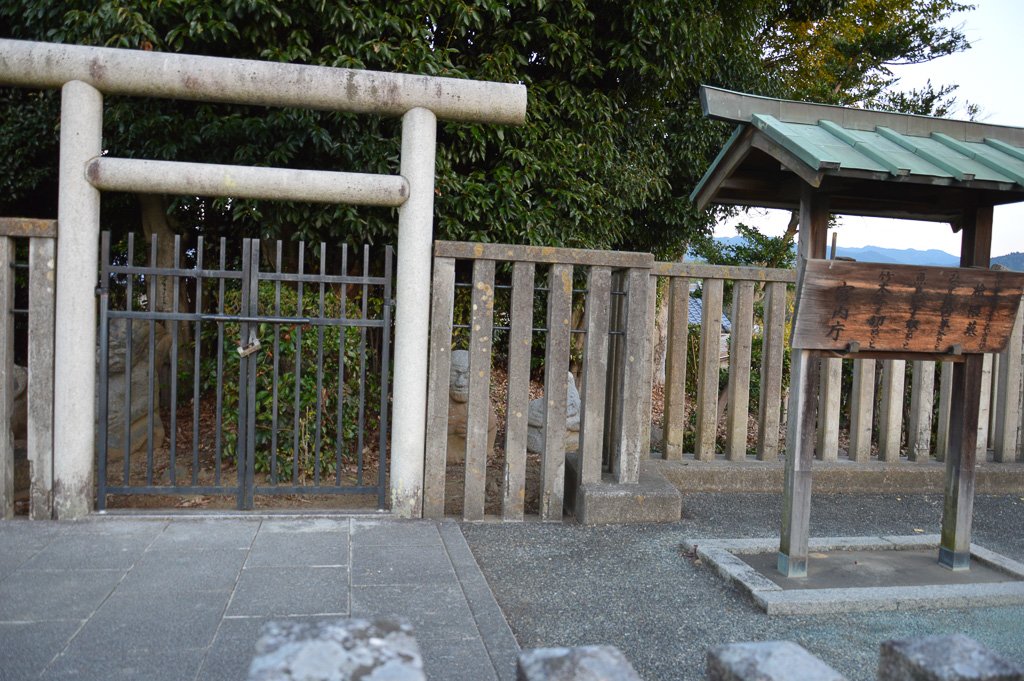
-
Welcome to Sengoku Daimyo’s Chronicles of Japan! My name is Joshua and this is Traveling Through the Nara Basin, Part II
This episode, I’d like to pause in our narrative to take you on a journey through the modern landscape of Asuka. This is a continuation from episode I did last year covering travels around the southeastern edge of the Nara Basin, from Tenri down to Miwa. I’m going to skip over some of the sites in Kashihara—we may save that for a discussion of the Fujiwara palace that was there—and head straight to Asuka.
Standing at the southern end of Asuka, at the site of the ruins of the Itabuki palace, looking north, with the hills at your back the view is rather bucolic. Between the hills on either side of the valley, one can see rice fields spreading out. Along the western edge, the narrow Asuka-gawa winds along the base of the hills on its way north, joining with the Yamato river in the heart of the Nara Plain, far from view. Along the eastern hills are various houses, heading out to a cluster around the current precincts of Asukadera.
It is a far cry from the ancient capital it once was. The large mansions and palaces that once filled the landscape are gone, their traces often lying beneath the rice paddies. Amongst the hills, ancient tumuli still look down over the valley below, some with their contents ripped open—whether by man or nature—for all to see. At the end of the Asuka period, the capital would move—first just a short hop away to the plains of Kashihara, to the north, but eventually up to Heijo-kyo, in modern Nara city. A century later the capital would move north, settling in Heian-kyo, aka modern Kyoto city.
Asuka, in turn, remained largely untouched by the urbanization that would take place in many of the large cities. As the capital moved farther away—to Kashihara, then Nara, then Kyoto—Asuka was left behind. The temples and buildings succumbed to time, and no great settlement sprung up in its place. There were castles built on strategic hills by local lords, but much of the land remained rural Asuka would never be quite the same, a fact that would be of some relief to archaeologists and students of history in later centuries. The lack of urbanization meant that traces of those ancient times—at least those underneath the layers of soil overturned by farming—do remain.
Asuka is believed to have been a stronghold for the powerful Soga clan. By rising through the ranks, marrying into the royal family, and supporting the winning side in various succession crises—not to mention their ties to the exotic Buddhist religion—they were able to make themselves into the most powerful family in Yamato, second only to the sovereign, and their stronghold of Asuka became the site of the palace building for at least four sovereigns. It was also the home to some of the first permanent Buddhist temples, so it is the stage for much of what plays out in the late 6th to 7th centuries.
For anyone planning a visit, the first thing you should know is that Asuka is still quite rural. There are a few train lines that you can take nearby—the Kintetsu line Asuka station is probably the closest for most things, but since I was also visiting the Fujiwara palace ruins I rode into Kaguyama station on the JR line early in the morning.
And so I entered Asuka from the north, passing by Kaguyama, one of the three sacred mountains of Kashihara. Near Ikatsuchi, I followed a small road that cut across rice paddies just north of the presumed site of Kashikiya Hime’s Oharida palace. This is the palace she moved to in the latter part of her reign, giving over the site of Toyoura, to the southwest, for a nunnery.
Making my way through the open rice paddies, I reached a small neighborhood on the other side. The buildings were a mix of new and old, but nothing quite as old as what I was looking for. I continued on, making my way to the Asuka Historical Museum. This is an excellent museum for anyone interested in the area, with examinations of various temple ruins, kofun, and more. Outside, there are numerous copies of the various stone figures that dot the landscape here in Asuka, such as the Saruishi, or Monkey stones.
These stones are a bit enigmatic. There is no clear relationship between the origin of most of the stones and any particular event that I could see in the Nihon Shoki or elsewhere. The saruishi were discovered by farmers in their fields in 1702, near Umeyama kofun, and eventually moved to their current location at the site of Kibi Hime’s tomb, outside of the giant keyhole shaped tomb for Amekunioshi, aka Kinmei Tennou. They are called “monkey” stones, or Saru-ishi, because people thought they resembled monkeys, but in truth they are probably just carvings meant to represent people. Scholars believe that they probably date back to the latter half of the 7th century, and may have been carved by immigrant Baekje artisans, based on their similarity to statues found on the Korean peninsula, but this is all conjecture. The originals are viewable from behind a fence, but at the Asuka Historical Museum you can get up close and personal to them and really see the details—at least what hasn’t eroded away.
There is also the Kameishi, or turtle stone, which you can go see, but which also has a replica at the museum. There are stories about this giant stone, carved to look like a turtle, but its exact purpose is unknown.
There are also reconstructions of various kofun stone chambers, so you can see what is inside some of the large mounds, as well as stone fountains and water works, demonstrating not just the skill of the artisans of that era, but also their ability to harness the flow of water back in that time.
Inside, much of the information in the museum is in Japanese, but there are English descriptions of artifacts and some contextualization, but if you don’t read Japanese and are interested in what they have to say about the palace and temple ruins then a translation app is your friend. In fact, it is generally recommended for any travel where you may be in need of translation, these days.
Inside the museum, they go over the layouts of some of the later palaces, especially the Okamoto, Itabuki, and Kiyomihara palace sites, for which at least the inner court area is fairly well defined. They also take a look at temple structures and the various continental influences, as well as a reconstruction of a water clock described by the Nihon Shoki during the reign of the sovereign known as Saimei Tennou—rest assured we will talk more about that at a later date.
They also have a good look at the inside of the Kitora tomb’s burial chamber, recreated for you. The Kitora kofun and the Takamatsuzuka kofun are two of the most famous kofun in the area, but not necessarily for who was buried there. Both of them have been opened, and inside it wasn’t just grave goods, but they found painted chambers. In the Kitora kofun we find the directional guardian animals. These are four mythical beasts that represented North, South, East, and West, and they were Genbu, the Black Turtle of the North; Suzaku, the Red Bird of the South; Seiryuu, the Blue—or Green—Dragon of the East; and Byakkou, the White Tiger of the West. In this case, since the tomb was opened from the south, only three of the paintings were visible, and the east and west walls were not in great shape, but it was still legible. They are doing their best to preserve these paintings, and the museum only has copies, but it still helps to understand the time period. The burial probably took place in the 7th or 8th century, and has been suggested that it was a high ranking noble or royal prince—or possibly even a high ranking person from the continent.
Takamatsuzuka, on the other hand, has even more detailed murals from the late 7th or early 8th century. The murals include the directional animals, but also pictures of courtiers dressed in the continental fashion. The murals resemble those found in Goguryeo, and again, there are still many questions about just who was buried there. Both the Kitora and Takamatsuzuka kofun are round kofun, and not especially large or prominent compared to some of the giant keyhole shaped kofun or previous eras, but the decoration and grave goods suggest people of status in both cases. Also, since Takamatsuzuka gives us some of our only clothing evidence from this period, and it holds similarities to what we know of Nara and later Heian era clothing, it is often used as a key reference point when looking at the clothing and culture of this time. The Takamatsuzuka kofun is only a short distance from the Asuka train station, but I did not visit this trip as I had been there many years prior, and I do recommend it if you get the chance. Kitora kofun is a little more out of the way, but still doable, especially if you have more than a day to wander around the area.
In addition to the tombs, the museum has a large exhibit on Asuka era temples, including a section of wooden wall from a building at nearby Yamadadera. This section was found in 1980—apparently it had collapsed onto the ground and been covered up, as much of the wood was still preserved. The section is dated to be even older than the oldest extant buildings of Houryuuji, and it gives a great example of the construction techniques of the time. Since they didn’t have glass windows, we see them using vertical wooden bars. You can still see this on old style buildings and galleries, where a pole with a square cross-section will be tilted like a diamond and placed in the windows, creating a series of wooden bars that let in light, but still act as a barrier to entry. This only really works on external walls, unless you have another kind of shutter to put over them, but it is effective. We also have other items from the temple, including the head of a bronze Buddha statue.
From what we can tell, this was another Soga family temple. It is mentioned in the “Joguuki”, the biography of Shotoku Taishi, as well as in the Nihon Shoki.
It is also a short walk from the museum, and an easy visit. Warning, though, there isn’t a lot to see on the site. The outline of the temple and the various buildings is visible, and you can see how they lined up and get a sense of the approach, but it is fairly sparse. There is a modern temple on the site—Yamadaji, or, read another way, Yamadadera. It is not nearly as grand as the original, and is more like a rural, neighborhood temple. During the Asuka period, Yamadadera likely attracted attention from far and wide as one of the chief temples of the capital.
Speaking of temples, I next turned back down the road and headed towards Asukadera. On the way isare the Ishigami site an theand Mizuochi sites, next to the Asuka district Exhibition Room of Archaeological Cultural Assets. The Ishigami site is a section of the stone pathways near an ancient guesthouse. Nearby is the Mizuochi site, which has been speculated to be the site of the water clock I mentioned earlier. There was a moat for catching and holding water, as well as various pipes for getting the water up to the clock. The clock itself contained several different buckets at different levels, so that a hole poked in the top bucket drained into the one below and then the one below that. The idea was that the water would flow at a fairly constant rate, and that could be used to tell the time. At the bottom was a float with an image of an official who held a ruler. The ruler would rise with the float and thus indicate the time. This was a great innovation as it would work even when the sun was not out, but it would need to be reset each day at a specific time to ensure that it was accurate.
As for the nearby Exhibition Room—it is free, and so worth a look around. Much of what is there is the same as the Asuka Historical Museum, but there are a few differences. It is only a single room, so an easy in and out, and you can grab a bite or something to drink before you head on, so worth the stop if you are passing by, but if you are short on time you could easily give it a miss, as well.
Continuing up the valley, to the south, I next stopped at Asukadera. I approached from the west, though the parking lot and main entrance is to the east. At the western edge there was a memorial for the Soga family members—more on that as we get back to the episodes. You can also see where the gates and walls used to be, though now the temple itself is much reduced. You no longer have the original footprint of the temple—when the capital moved to Heijo-kyo, the temple formally moved as well. It was rebuilt in Heijo-kyo as Gankouji, but it wasn’t like they could just move all the buildings—though that was sometimes done. Over time things were dilapidated or destroyed by fire, and Asukadera itself shrank. They did find and preserve the giant Buddha statue believed to have been installed in the reign of Kashikiya Hime, though the statue had been repaired extensively, such that only parts of the statue are thought to be original. You can come into the worship hall for a fee and the monks there will tell you the history of that and other images at the temple—in Japanese, of course—and you are allowed to take pictures.
While the temple is reduced, it is still an incredible experience to stand there and imagine what it once was. In addition, you can look up the valley and picture the ancient palaces that once stood there as well.
And that was my next stop. I headed up the roads towards the ancient palace sites. I noticed that there was some work going on near the Itabuki Palace site, and so I headed over that way. This means I did skip the Nara Prefectural Complex of Man’yo Culture, which looks to have some excellent depictions of life during Asuka and Nara periods, focusing on the period of the Man’yoshu, the book of ten thousand leaves, our earliest collection of Japanese language poetry written with “man’yogana”—sinitic characters used primarily for their sound to represent the Japanese language of that era. This is only one of many reasons that I will be returning to Asuka on a future visit.
Still, I only had so much time in the day, and so I wandered over the old palace sites. There was an excavation underway, and I admit I still need to look into if there was a site report for the work—this was in November of 2022. I don’t know if there were any major changes in our understanding at the time, but always great to see people in the field doing the work that helps us map and understand the past. While Tthere is a small rest area there, but you should be aware that after excavation, the site has largely been covered back up. There is a small display on the eastern side of the valley where you can see some post holes, but largely you have to use your imagination to see the palace and where it was. I still just like to be there and experience the site and get an idea for even just the topography of the place, which I really believe puts things in perspective.
From the Asuka palace site, I headed up the road and a little bit into the hills to see Ishibutai kofun. This is a famous kofun and is extremely impressive in its presentation, despite the fact that it has no grave goods and we don’t really know who was buried there. You see, though it was apparently a square shaped kofun, all of that dirt has been removed—likely by erosion or other factors—but that means that the stone chamber inside has been exposed. With that you can see the enormous stones that people moved into place to create the burial chamber. This was not a simple matter of making a brick enclosure, but rather it was massive boulders that were found and placed in such a way that I’m sure the builders of the pyramids or Stonehenge would have appreciated. As it was open to the elements, anything that was inside was either stolen or rotted away, but it is still impressive to see the construction. It is thought that this may have been the tomb of none other than Soga no Umako, that powerful Oho-omi that lead the Soga family to greatness, and some have suggested that with the Soga’s downfall, that could explain why the earth was removed from the tomb in the first place, to disgrace him and his family.
From Ishibutai, I headed west, taking the road between Tachibana dera and the ruins of Kawara dera. We don’t know exactly when they were founded, but it was likely in the 7th century. Tachibana dera claims to have been founded by Shotoku Taishi, and is said to have been built on the site of his birthplace. What we know is that it was mentioned in the Nihon Shoki by about 680, and it appears to have been a nunnery. To the north is the site of Kawara dera, and you can see the ruins in the field around the current temple of Gufukuji, which was established there after Kawara dera itself had fallen to ruin. Kawara dera and Tachibana dera may have been built as a pair of temples, and rooftiles have been found at each site that appear to be of a similar age.
However, neither temple has any of the original buildings left. There are some ancient stone statues, however: a stone with two people carved into it, facing away from each other, and, nearby, the Kameishi, or turtle stone, which some claim marked a boundary point between the two temples. That isn’t to say that the current temples don’t have anything worth seeing, and if I had more time I would have definitely looked into it, but I had my sights set a bit farther afield, because continuing down the road will take you to several notable kofun.
First off is the kofun of Temmu and his wife Jitou—I’ll stick with the regnal names for now, as they haven’t really come up in our story, but we’ll definitely have a lot to talk about when we get there. This is an octagonal kofun, likely representing Buddhist influence and the importance of the number “eight” at the same time that kofun themselves were starting to fall out of fashion. The shape isn’t easy to make out, given that it is overgrown with trees and other vegetation, and you aren’t allowed on the kofun itself. Still, it is something to visit it and give some thought to history.
Next along the path, following a trail that cuts along the hillside, is the Demon’s Cutting Board and the Demon’s Toilet. Yeah, you heard that right. These are two large stones, one up on the hill, and one a little farther down. A local story tells of an oni—a demon or ogre—that would catch passersby and eat them. The oni would chop them up on their cutting board, the Oni no Manaita, and would then relieve himself in the toilet, the Oni no Setchin. In reality, they appear to be two parts of a stone chamber for a kofun that was likely on top of the hill, but which was dug up or the top eroded away and then the top portion, the “Setchin” stone, fell down, possibly due to some kind of local event—a landslide or earthquake, or something similar. Needless to say, there is nothing left of the grave other than these two giant stones, with any goods having long been taken.
Continuing on along the path past that is the giant keyhole shaped kofun designated as that of Kinmei Tennou, aka Ame Kunioshi Hiraki Hiro Niwa. The tomb is large, and impressive, and a good example of the kind of royal tomb that was the norm up to that point. Perhaps more intriguing is something I mentioned, earlier, because there are satellite kofun nearby. Satellite kofun are often assumed to be people related to the main kofun in some way—it could be family members, consorts, or even special courtiers who served them well. In this case, the tomb has been identified as that of Kibi Hime, and, unrelated to that as far as we can tell, it has become the home of the saruishi, the monkey stones I mentioned earlier. They are behind a barrier, so you can’t get too close, but it is neat to see them there, bearing silent witness to an age long past.
At that point, the sun was setting behind the mountains. I followed the road back to the Asuka train station and from there headed on to my next destination. I left nearby Takamatsuzuka, which, as I said, I had seen on a previous trip, as well as many other sights. After all, just to the west is Katsuraki, and to the north is Kashihara, which is not only home to Temmu’s Fujiwara capital, but also to the three sacred mountains and numerous other kofun dotting the landscape. Farther north still and you can visit Houryuuji Temple, and the nearby Chuuguuji temple, both of which have treasures from the Asuka and Nara periods, including the oldest extant wooden buildings in the world. I highly recommend it.
There is also more to explore. There are old castle ruins—mostly just earthworks—and other temples and buildings from ages to come after the Asuka period. While it was never exactly built up, that doesn’t mean that Asuka remained completely untouched throughout the centuries.
I’ll put up some photos on the podcast webpage so that you can see things for yourself, and I hope that one day you all get a chance to visit Asuka. It truly is a beautiful place, nestled amongst the hills and looking out into the Nara Basin. There is a feeling as if, despite the roads and modern vehicles, time still moves a bit slower there. And though the ancient buildings that once marked the capital of Yamato are no longer there, the traces and their presence can still be felt.
Next episode we’ll get back into the narrative. I want to dive a little deeper into what was going on over on the continent before we start to unravel everything happening in Yamato, as the Tang dynasty had come to power, and it was just beginning a period that would come to be known as its golden age.
Until then, thank you for listening and for all of your support.
If you like what we are doing, tell your friends and feel free to rate us wherever you listen to podcasts. If you feel the need to do more, and want to help us keep this going, we have information about how you can donate on Patreon or through our KoFi site, ko-fi.com/sengokudaimyo, or find the links over at our main website, SengokuDaimyo.com/Podcast, where we will have some more discussion on topics from this episode.
Also, feel free to Tweet at us at @SengokuPodcast, or reach out to our Sengoku Daimyo Facebook page. You can also email us at the.sengoku.daimyo@gmail.com.
Thank you, also, to Ellen for her work editing the podcast.
And that’s all for now. Thank you again, and I’ll see you next episode on Sengoku Daimyo’s Chronicles of Japan.

